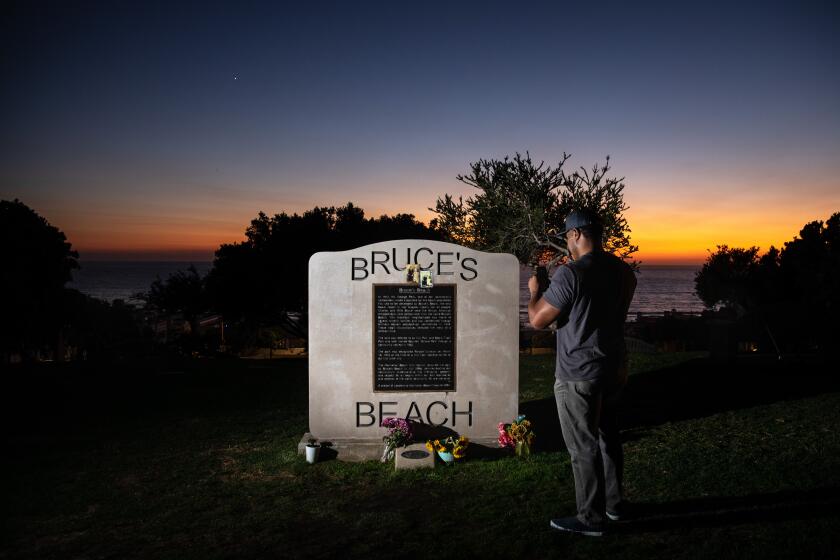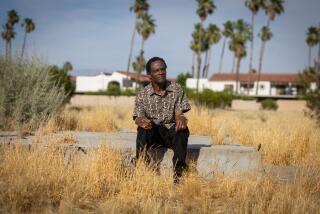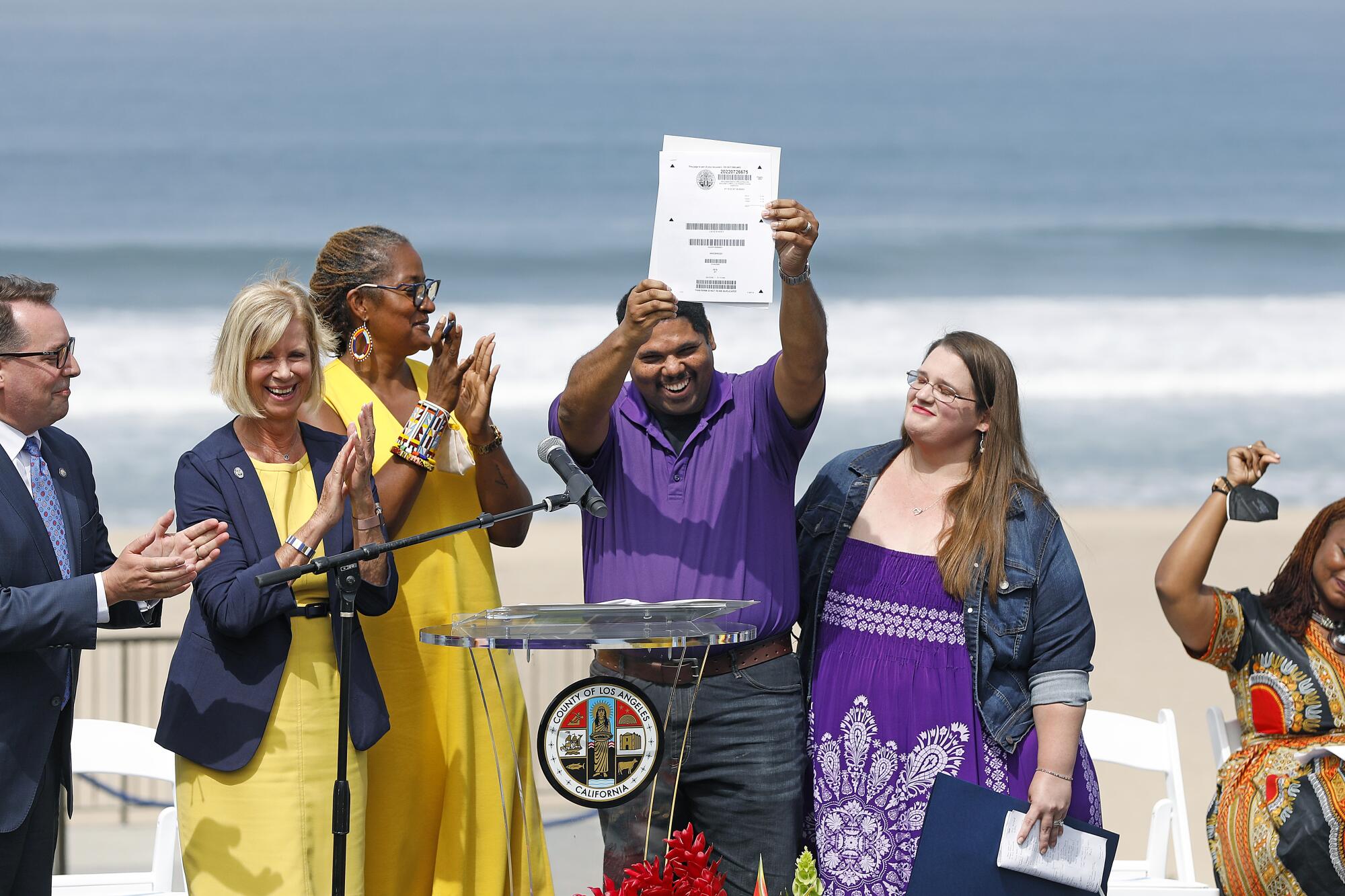
- Share via
It’s official: The Bruces own Bruce’s Beach again.
In a heartfelt ceremony Wednesday, dozens of people gathered on the oceanfront property known as Bruce’s Beach to mark the first time the government ever returned land that had been wrongfully taken from a Black family — the triumphant coda to a call for justice that has captivated the country for the past two years.
“Today, we’re sending a message to every government in this nation confronted with the same challenge: This work is no longer unprecedented,” said Los Angeles County Supervisor Janice Hahn, who had launched the complex legislative and legal process to transfer the property. “We have set the precedent, and it is the pursuit of justice.”
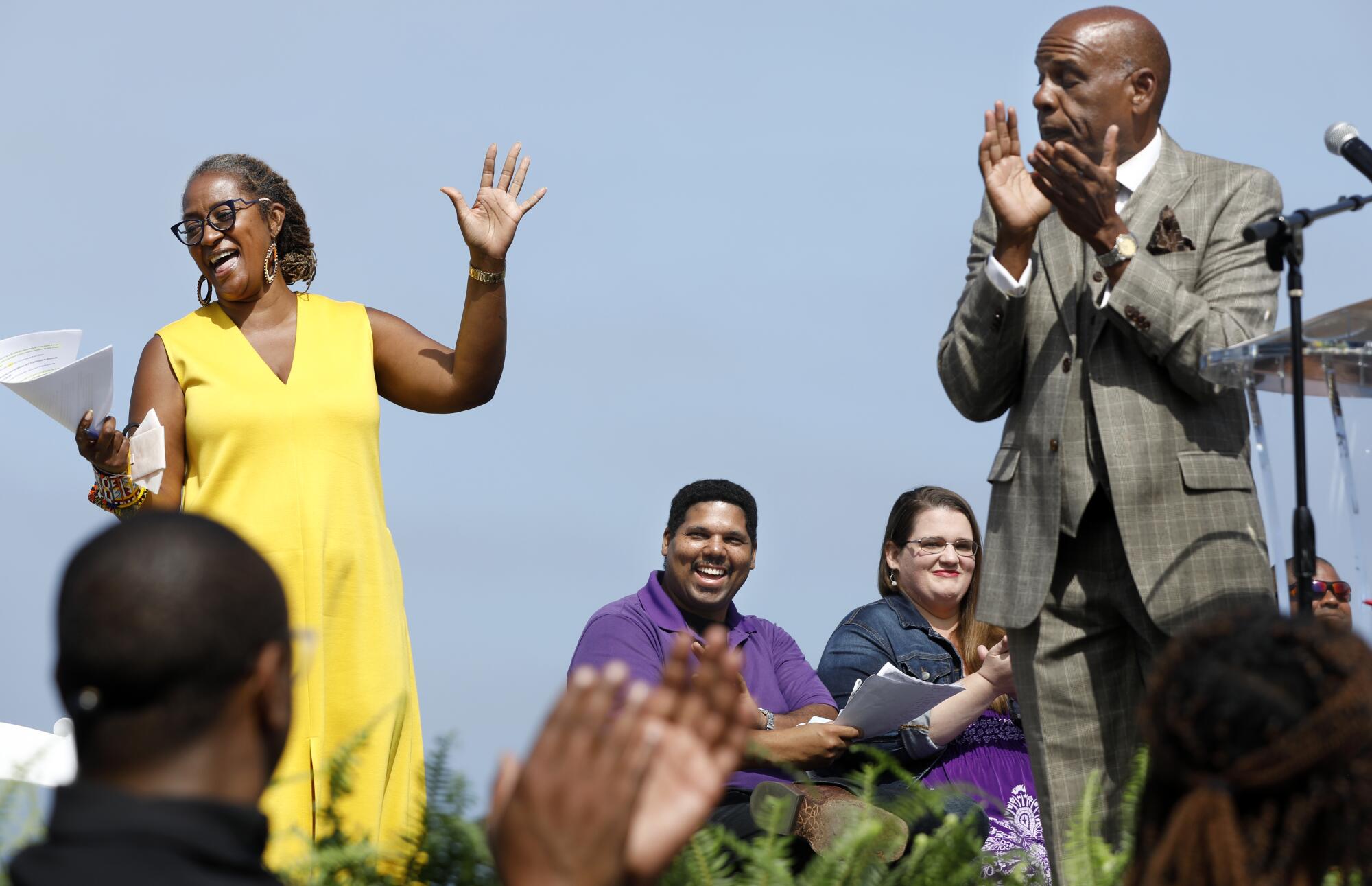
Turning to Anthony and Derrick Bruce, Hahn told the rightful heirs to the land, “we can’t change the past, and we will never be able to make up for the injustice that was done to your great-great grandparents and great-grandparents Willa and Charles nearly a century ago. But this is a start.”
The crowd erupted with whoops and cheers as Anthony Bruce held up the certificate of the deed — the document that officially reconnects him with the land that has long carried his family’s name. A few people wiped away tears as the Inner City Youth Orchestra of Los Angeles, the largest majority Black orchestra in America, played the hymn “Lift Every Voice and Sing.”
Sing a song full of the faith that the dark past has taught us
Sing a song full of the hope that the present has brought us
“We cannot change the injustices done to our people in the past, but we owe it to future generations to eliminate structural and systemic racism that still exist today,” said State Sen. Steven Bradford (D-Gardena), chair of the California Legislative Black Caucus. “This transfer of land … represents a template for other states to follow — to fight to repair, and ultimately salvage, what was lost.”
Los Angeles County will now rent the property from the Bruces for $413,000 a year and maintain a lifeguard facility there, according to a detailed plan released last month. The lease agreement also includes the right for the county to purchase the land at a later date for $20 million, plus any associated transaction costs.
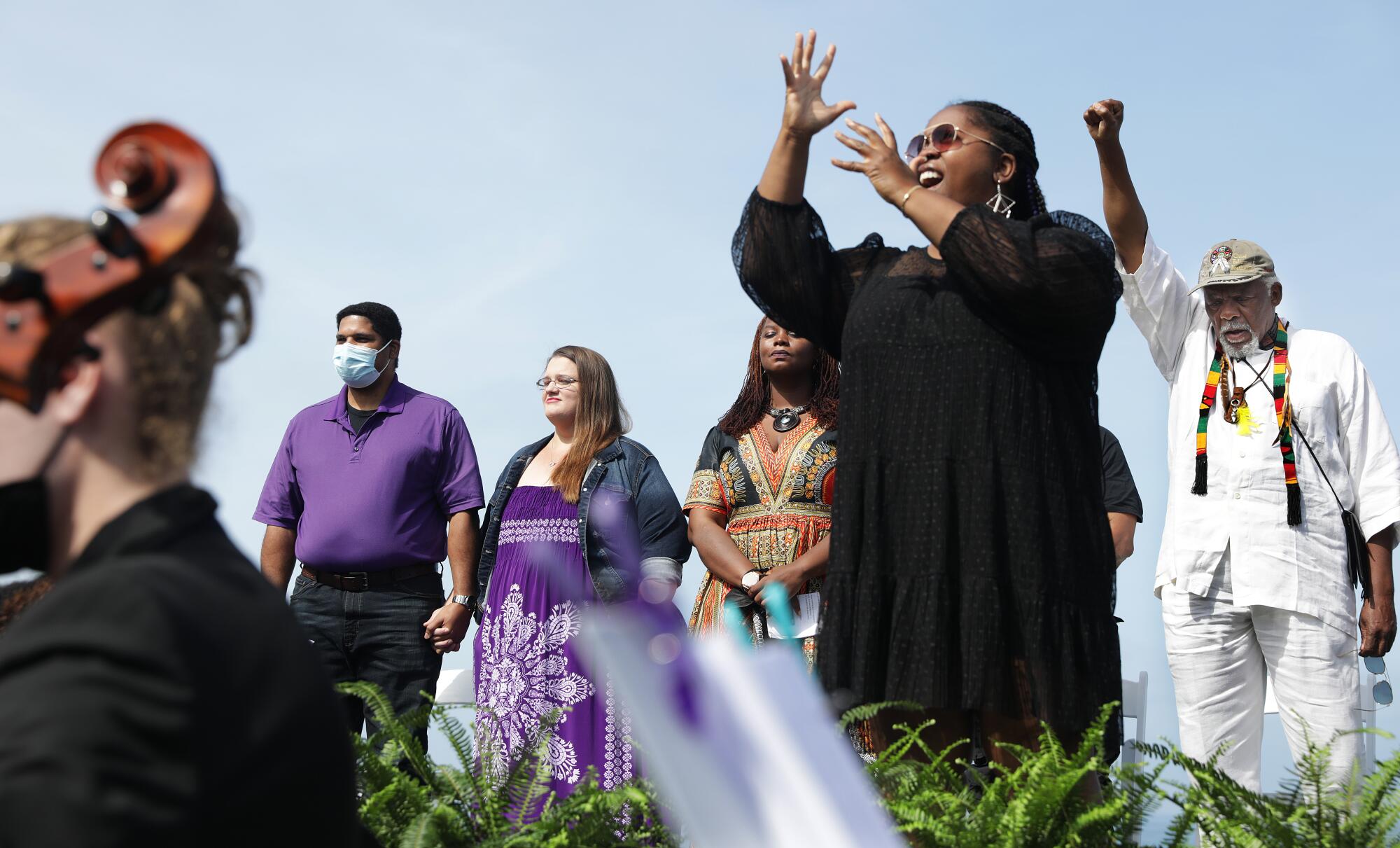
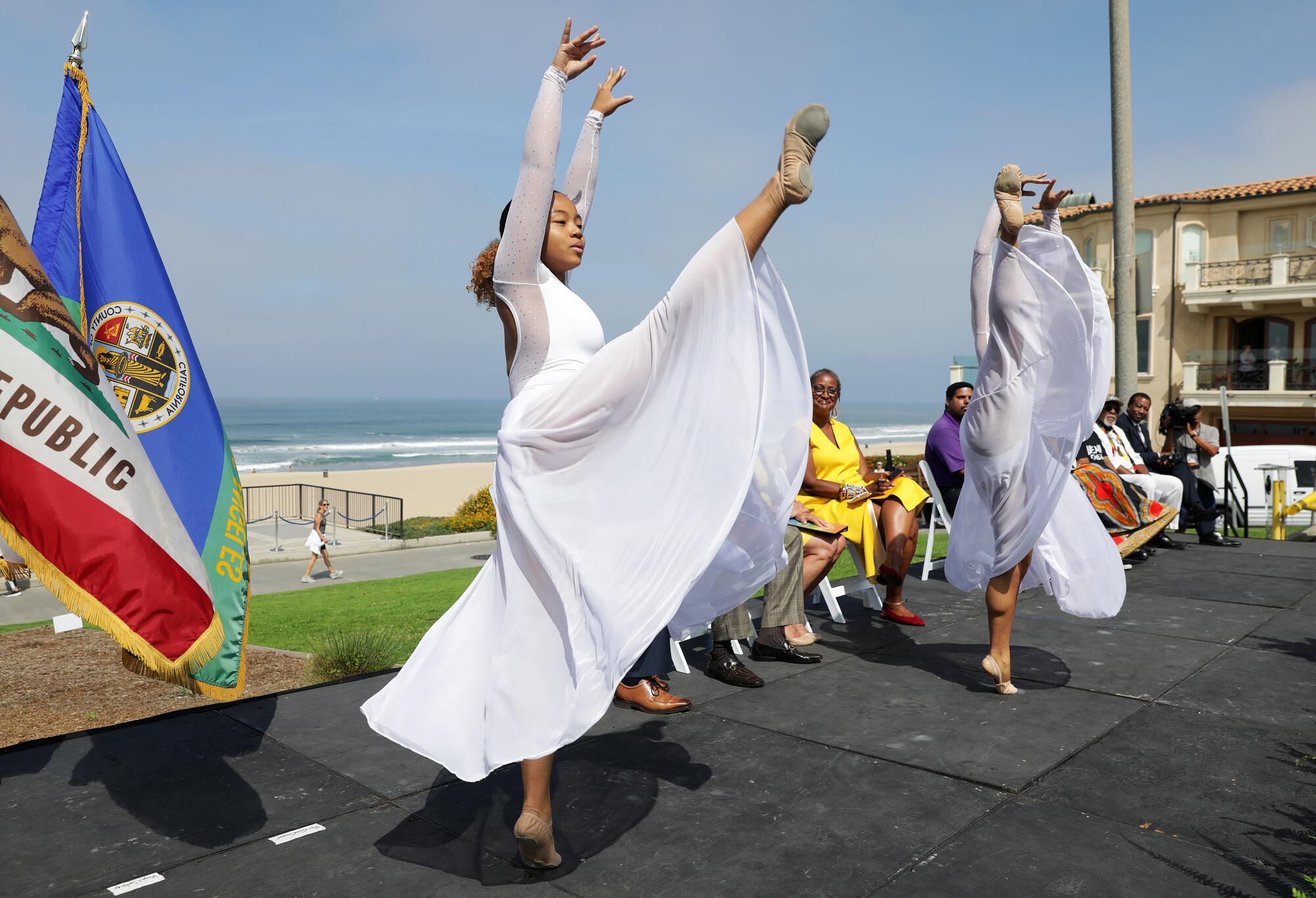
Efforts to return the land to the Bruce family began in 2020, when Hahn learned the history of Bruce’s Beach and realized the county had the power to right a well-documented wrong.
Charles and Willa Bruce had found their way to a burgeoning California in 1912, years after white developers claimed the ancestral homelands of the Tongva people and built what is known today as Manhattan Beach.
Willa purchased two lots right by the sand and ran a popular lodge, cafe and dance hall that extended a rare welcome to Black beachgoers. A few more Black families, drawn to this new neighborhood that became known as Bruce’s Beach, bought and built their own cottages by the sea.
Before Manhattan Beach shut it down, Bruce’s Beach was a famous Black-owned beach resort. Now, some want the city to atone for its actions.
But the Bruces and their guests faced increasing threats from white neighbors. The Ku Klux Klan and local real estate agents purportedly plotted to harass them.
When racism failed to drive this Black beach community out of town, city officials in 1924 condemned the neighborhood and seized more than two dozen properties through eminent domain. They said there was an urgent need for a public park.
But the properties sat empty for decades. The two oceanfront parcels that had been owned by the Bruces were transferred to the state in 1948, then to the county in 1995. (The other lots, still owned by the city of Manhattan Beach, were eventually turned into a park.)
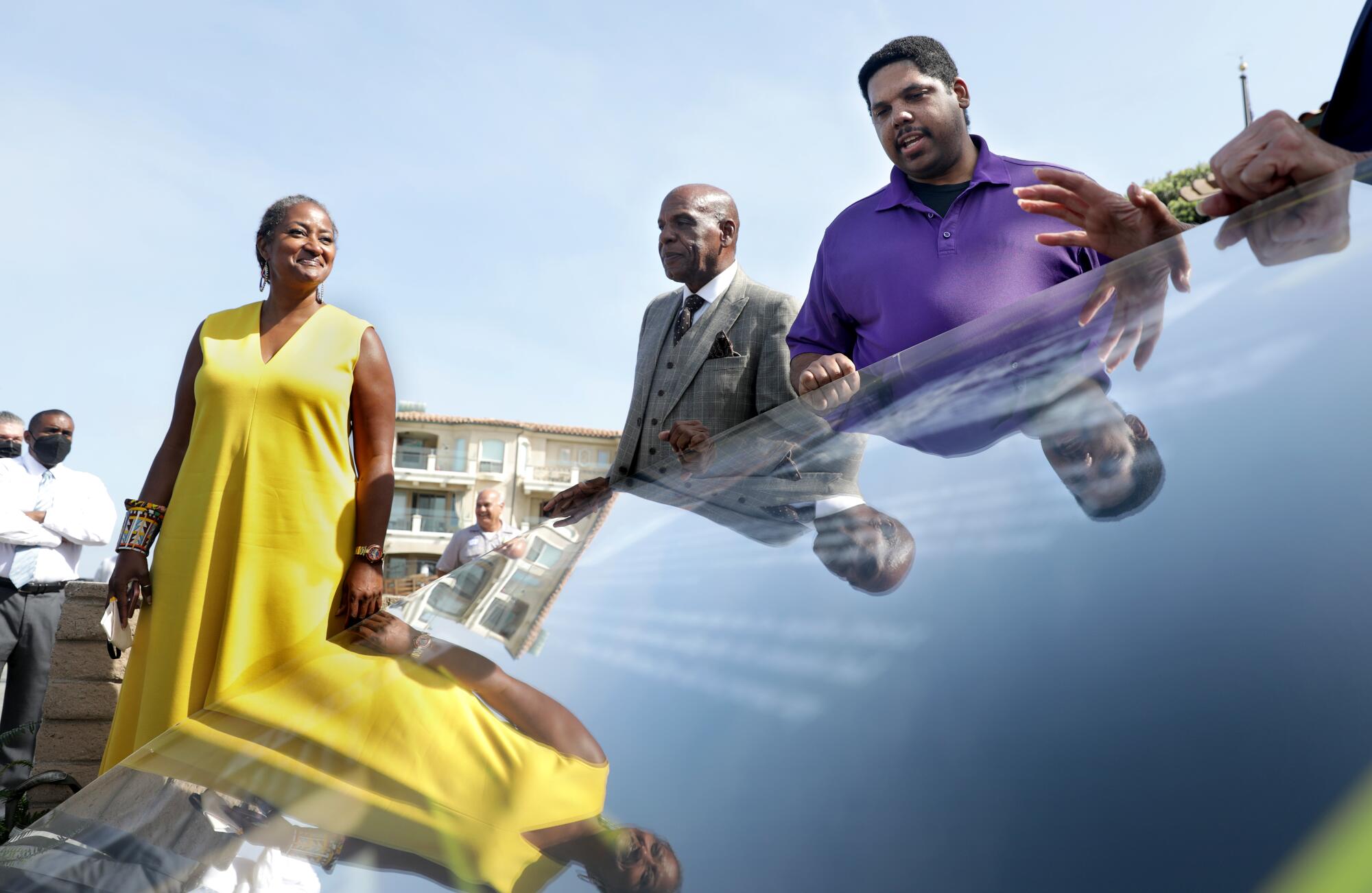
When Hahn realized the county now owned the two parcels where the Bruce resort once stood, she joined forces with Supervisor Holly Mitchell, and Sen. Bradford, who rallied state lawmakers and the governor to authorize transferring the two parcels back to the Bruce family.
George Fatheree, a real estate transaction lawyer who represented the Bruce family pro bono, worked with county officials to unravel every step of this uncharted process. They conducted lengthy genealogy studies, overcame a legal challenge, and completed a complicated economic analysis to determine the value of the property.
“I do thank God,” said Anthony Bruce, who flew in from Florida on Wednesday and was joined by his wife, Sandra, and his father, brother, uncle and many extended members of his family.
When it was his turn to speak before the crowd, he simply pulled out a long list of people that had helped make this moment possible. He used the rest of his time to name every single person — there were dozens — and ran out of breath a few times. But with the crowd still cheering, he grinned and kept on reading.
The ceremony did feel like a reunion of sorts, as lawyers, legislators, and county staff greeted each other, along with the many community leaders who helped pave the way for change.
Gov. Gavin Newsom has authorized the return of property known as Bruce’s Beach to the descendants of a Black couple that had been run out of Manhattan Beach almost a century ago. Catch up on The Times’ coverage.
There was Kavon Ward, the force and heart behind the grassroots movement Justice for Bruce’s Beach; Alison Rose Jefferson, the historian who documented the story of Bruce’s Beach with precision in her book “Living the California Dream: African American Leisure Sites during the Jim Crow Era”; Duane Shepard Sr., a Bruce cousin based in South L.A. who helped his family navigate the media spotlight; and Mitch Ward, who had sought to bring the history of Bruce’s Beach to light in 2006 when he was mayor of Manhattan Beach.
“This solidifies that what was once impossible is now possible,” said Kavon Ward, who is now helping five other Black California families in Santa Monica, Palm Springs, Coloma, Hayward and Canyon with stories similar to that of the Bruces. “It confirms that people have a right to have this much audacious hope and vision. … I am looking forward to many more days where we correct the harm that was done.”
There is, indeed, a lot more history to unwind, with many pointing to the violent dispossession of Indigenous people in this country and the racially motivated displacement of other communities of color. But the decisive return of Bruce’s Beach demonstrates that it is possible — if the political will exists — for more cities and states to atone for past injustices.
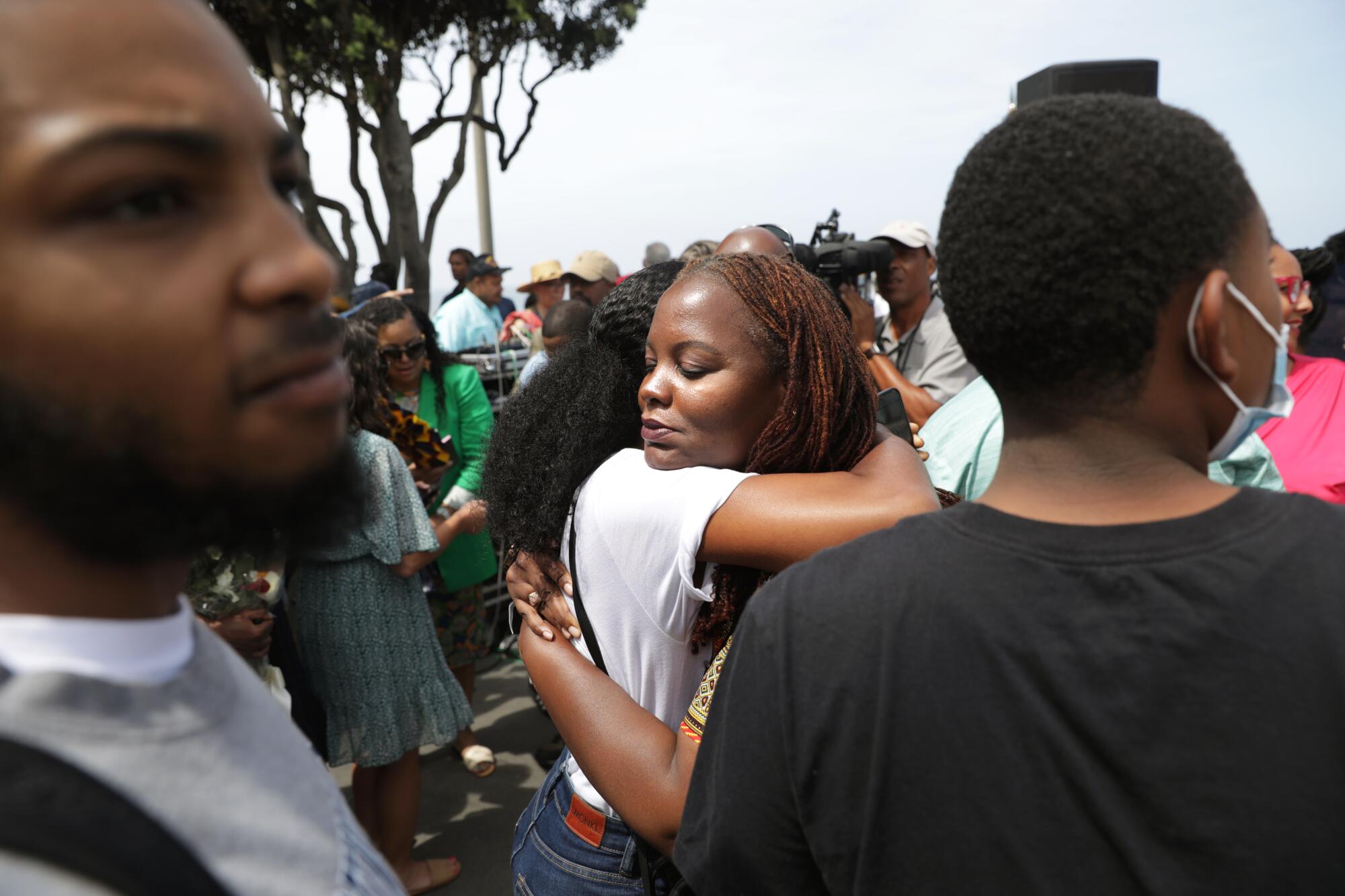
Mitchell, who emceed the ceremony as chair of the Board of Supervisors, also stressed that the county’s efforts to undo past injustices cannot end at Bruce’s Beach.
“These aren’t moments, they are movements,” said Mitchell, who took in all the bittersweet emotions of the day when Sam Cooke’s “A Change is Gonna Come” started playing. “This has been a marathon, not a sprint — and it was a marathon where a number of people have taken the baton and pass it and pass it and pass it to get us here today.”
She held out her arms as the crowd stood up and cheered.
“Let’s welcome the Bruces home.”
More to Read
Sign up for Essential California
The most important California stories and recommendations in your inbox every morning.
You may occasionally receive promotional content from the Los Angeles Times.

